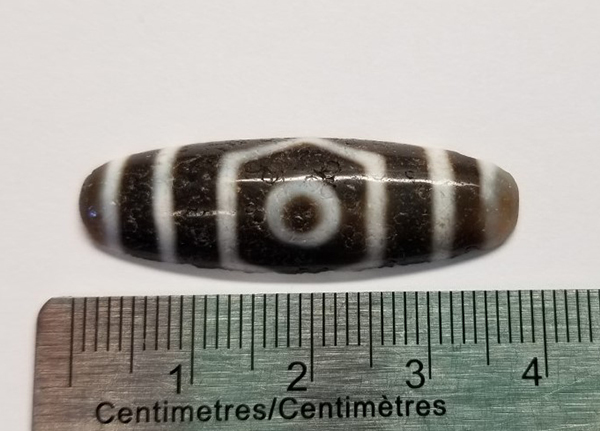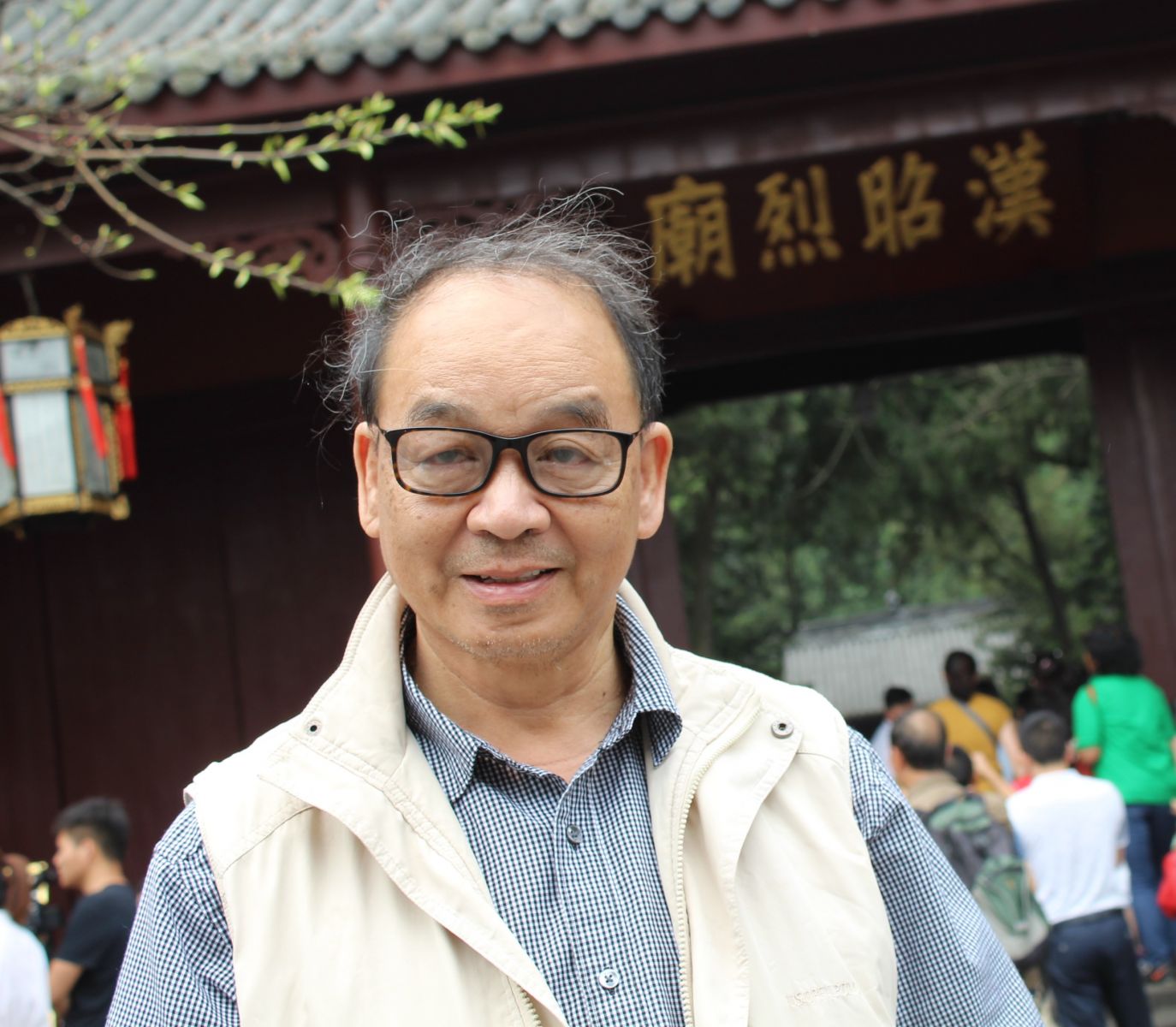Uncovering the secrets of a mystical Himalayan Dzi bead
Western University researchers used the Canadian Light Source to study a mystical object treasured by peoples of the Himalayan regions.
By Western UniversityThe Dzi bead studied by the scientists.

For Averie Reinhardt and her undergraduate thesis supervisor, TK Sham, the bubbling glassware of the stereotypical chemistry lab gave way to a story of international intrigue as told through the molecular composition of a mystical object treasured by peoples of the Himalayan regions.
While travelling in China’s Sichuan Province with his wife, TK Sham, of the Department of Chemistry at Western, found a jewellery store selling Dzi beads. Coveted by many, and believed to hold healing properties, these stone beads are held closely by their owners for generations. The unique markings on the beads are thought to occur naturally in the formation of the stone; as the markings become more complex, prices of the beads can soar to the tens of thousands of dollars. Sham bought a relatively inexpensive example and hatched a plan…

“In my fourth year, I was looking for a thesis project that was completely different to what I’d been learning about in class. When I saw TK’s project looking into the chemical origins of a mystical bead, I couldn’t say no!” exclaims Reinhardt. Upon joining Sham’s lab, Averie had the latitude to devise experiments and discover the murky beginnings of the Dzi bead.
“There are so many counterfeit beads so, of course, I wanted to understand what they’re made of,” explains Sham. The pair threw everything and the kitchen sink at finding out how these beads are made. “The real question was whether the beautiful markings were man-made or naturally occurring,” says Reinhardt. Using advanced analytical techniques, like scanning electron microscopy, X-ray diffraction, and the VESPERS and SXRMB beamlines at the CLS, Reinhardt and Sham found a series of interesting features in the bead.
“On the surface of the bead were tiny holes – we called them etch rings. On the circumference of these etched rings were tiny holes with microscopic deposits of copper oxide,” explains Sham. The team also found that the bead was made of agate, a type of quartz, however there was an unexplained trace of carbon as well. “In the end, I think we came away with more questions than answers,” laughs Sham, “Such is the nature of science.”

The foray into the Indiana Jones-esque reaches of chemistry yielded no firm conclusion as to the provenance of the bead, but for Reinhardt, the experience was unforgettable. “Because we had no clue what to expect, I was allowed to design experiments and develop lines of inquiry,” she explains. This agency over the scientific process has left a lasting impression on the recent graduate; now working as a laboratory assistant in an environmental lab, she is contemplating a return to academia.
Sham is still chasing the secrets of the Dzi bead, which will continue its circuit from lab to lab across Western Science.
Reinhardt, Averie, Renfei Feng, Qunfeng Xiao, Yongfeng Hu, and Tsun-Kong Sham. "Exploring the Dzi Bead with Synchrotron Light: XRD, XRF Imaging and μ-XANES Analysis." Heritage 3, no. 3 (2020): 1035-1045. DOI: 10.3390/heritage3030056.
Original story shared by Western University.
For more information, contact:
Victoria Schramm
Communications Coordinator
Canadian Light Source
306-657-3516
victoria.schramm@lightsource.ca
